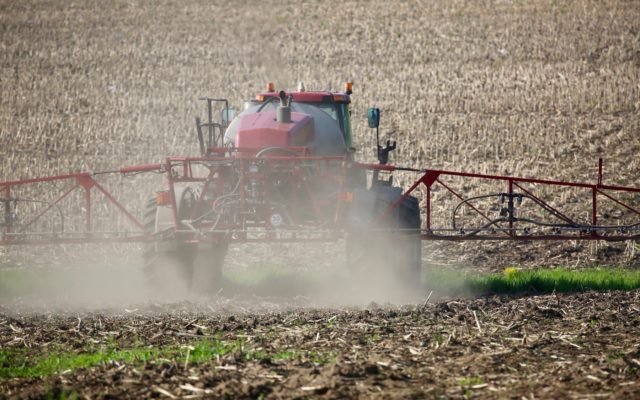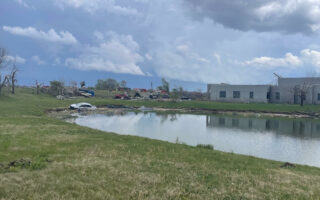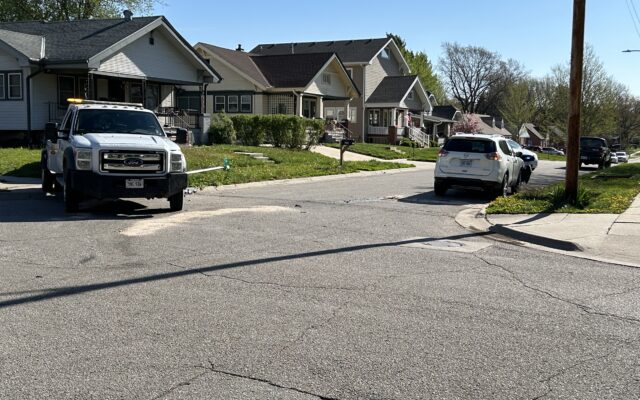UNMC Ag Center Offers Respiratory Protection Recommendations For Agricultural Producers

Protecting lungs from risks such as chemicals and dust is critical to keeping agricultural producers healthy.
Despite current shortages during the COVID-19 pandemic, farmers and agricultural workers still need respiratory protection for many tasks in agriculture. The Central States Center for Agricultural Safety and Health (CS-CASH) at the University of Nebraska Medical Center, College of Public Health, in partnership with the Ag Health and Safety Alliance and the High Plains Intermountain Center for Agricultural Health and Safety have developed recommendations for conserving respiratory inventory while supplies are limited.
Reuse of two-strap disposable respirators is not recommended practice, but in a time of limited availability, it may need to be considered. This type of respirator should only be reused within the following guidelines:
- A disposable respirator can be worn more than once, but it cannot be shared with another person.
- Store respirator in a clean, dry place between uses.
- Conduct seal checks each time you put on or adjust the respirator. (CS-CASH seal check video: www.youtube.com/watch?v=U8Inww-1avg)
- Do not attempt to clean the respirator with disinfectants, wipes, soap and water, or an air compressor.
- Avoid putting on, taking off or adjusting the mask with contaminated hands. Wash your hands before and after adjusting or removal.
- Discontinue use and throw away when it is splashed on, becomes dirty, becomes difficult to breathe, or when a seal cannot be obtained.
If using a reusable respirator such as a half-facepiece, full-facepiece or powered air purifying respirator, the following recommendations should be observed:
- Clean and sanitize the respirator after each use. This type of respirator can be shared only if it is cleaned and sanitized properly.
- Store respirator in a clean, dry place between uses.
- Avoid putting on, taking off or adjusting the mask with contaminated hands. Wash your hands before and after adjusting or removing.
- Change P100 filters after eight hours or 30 days, whichever comes first. If there is a shortage, continue to wear the P100 filter until it becomes dirty or difficult to breathe comfortably.
- Change cartridges according to the manufacturer’s recommendations. If there is a shortage, change the cartridge when you can smell or taste what you are protecting yourself against.
- To prolong the life of the cartridge, add pre-filters to cartridges that don’t have built-in pre-filters.
- Check and replace valves and head cradle as needed to ensure the respirator is in good working order.
A guide for choosing agricultural respiratory protection can be found at: www.unmc.edu/publichealth/cscash/_documents/outreach_resp_selection_guide_jun14.pdf
Cloth face coverings are not an acceptable replacement for a respirator at preventing exposure to respiratory hazards in the agricultural workplace. They should only be used as a means of infection control.
In order to slow the spread of COVID-19, the Centers for Disease Control and Prevention (CDC) recommends wearing cloth face coverings in public setting where other social distancing measures are difficult to maintain (grocery stores, farm supply stores, machinery dealerships), especially in areas of significant community-based transmission. This practice may help people who have the virus and not know it from spreading it to others, but it does not provide you with protection from any other respiratory hazards or COVID-19. Follow CDC guidance for cleaning and removing cloth face coverings: www.cdc.gov/coronavirus/2019-ncov/prevent-getting-sick/diy-cloth-face-coverings.html
Consider alternative controls that reduce exposure to respiratory hazards and thus reduce reliance on personal protective equipment (PPE). Examples include:
- Eliminate the process/task that creates hazardous dusts or gases.
- Use an alternative pesticide product that requires less PPE or the PPE that you have available.
- Ventilate and control dust at its source to reduce exposure in confined spaces.
- Hire an applicator or other contractor who has the required PPE.
When applying pesticides, the label is still the law. You must wear the PPE required by the product labels. If the label required respirator is not available, consider using a respirator that provides greater respiratory protection.
To find out more about best practices for respiratory protection during the COVID-19 pandemic visit: www.unmc.edu/publichealth/cscash/_documents/COVID-19-Respirator-Reuse.pdf






